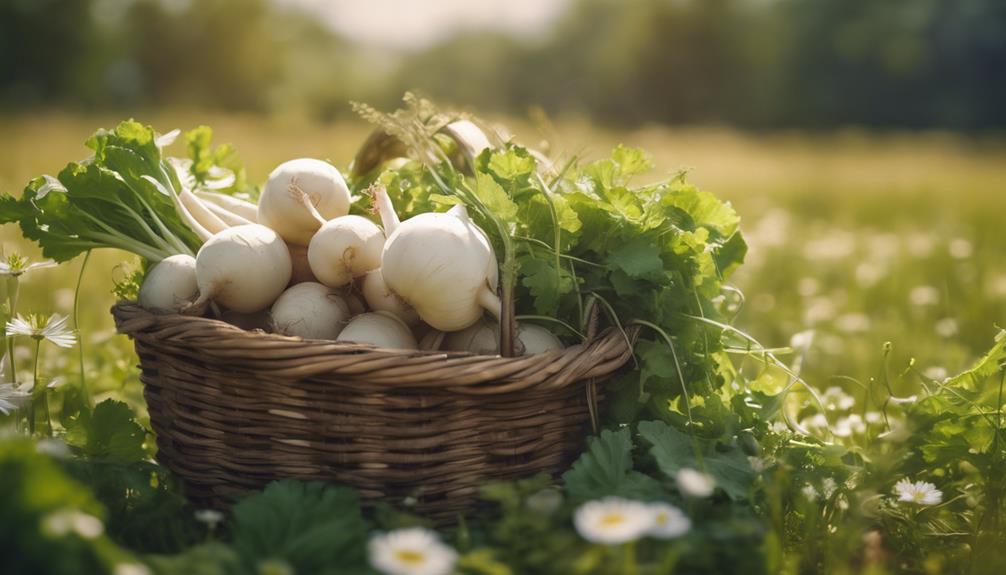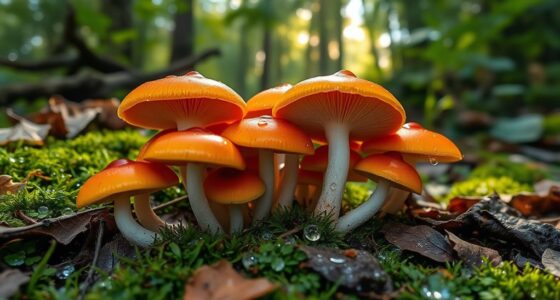Have you seen a rabbit eating greens with pure joy? Their noses wiggle, and ears stand up. It’s a sight that shows what rabbits love to do naturally.
But, have you thought about how much they can eat? How do we make sure they eat right but not too much? Let’s dive into how much these lovely animals really need for a healthy diet.
Key Takeaways:
- Knowing the right forage amount is key to a rabbit’s health.
- Neutered rabbits are much more likely to gain too much weight. This shows how vital portion control and diet watching are1.
- As rabbits get older, they need less energy. This changes if they live inside or outside1.
- Big rabbit breeds often gain weight easier. So, it’s important to watch their food and how active they are1.
- Smaller rabbits burn energy quicker and need more calories. They need special feeding plans1.
- Most of a rabbit’s food each day should be high-quality forage, like leaves and flowers. It gives them important nutrients2.
- Giving rabbits different kinds of forage is good for them. It also helps them act on their natural desire to search for food2.
- Hay should be about 80% of what a rabbit eats in a day. It gives them the fiber they need3.
- Checking a rabbit’s weight often and changing how much they eat based on their weight helps keep them healthy1.
Nutritional Needs of Rabbits
Rabbits need a balanced diet to stay healthy. Their diet must include proteins, carbs, fats, minerals, and vitamins4. Let’s look at what makes up a good diet for them.
Importance of Fiber
Fiber is very important for rabbits. It keeps their gut moving and helps avoid sickness4. Rabbits need about 15% crude fiber. Timothy hay is great because it’s about 30%-35% fiber45.
Calorie Requirements and Vitamin Levels
Rabbits get about 40% of their energy from volatile fatty acids in the cecum4. They also need the right amount of vitamins A, D, and E. Too little vitamin A or E can cause serious problems4.
Recommended Diets for Adult Rabbits
Adult pet rabbits should eat a high-fiber pellet diet. This diet helps keep them from getting fat45. Unlimited timothy hay is also good. It keeps them healthy and stops kidney and bladder problems4. What rabbits eat should match their age, health, and if they have babies6.
Consulting a Veterinary Professional
Always ask a vet about your rabbit’s diet. They can give advice that fits your rabbit’s needs56. Keeping an eye on their weight and changing their diet slowly is key to their health5.
Feeding rabbits the right diet helps them stay healthy and happy. It also protects them from getting sick.
Feeding Methods for Rabbits
Rabbits can be fed in two ways: limited feeding or free-choice feeding. Each method suits different rabbits and raiser preferences. Whether you choose one or the other depends on what your rabbits need.
In limited feeding, you give rabbits only a certain amount of feed each day. This feed is less than the amount they might eat if allowed. By controlling how much they eat, you can prevent them from getting overweight. This method is good for watching how much your rabbit eats every day. Adjustments to their diet are easier when you know exactly what they’re eating.
Free-choice feeding allows rabbits to eat anytime they want. A device like a hopper keeps the feed available all day. This method is great because it lets rabbits eat when they naturally want to. However, it might lead to some wasted food if the rabbits scatter it. To reduce waste, it’s smart to use specially designed feeders.
The amount of food a rabbit needs changes with different factors. Things like the type of food, weather, and the rabbit’s size matter. For instance, young rabbits eat about 4 to 6 ounces of food daily. But a mother rabbit and her babies might need about 100 pounds of feed in total. Efficient feeding strategies can mean a rabbit gains weight using less food.
Rabbits typically eat more at night. They are most active at dawn and dusk. Feeding them in the evening can match their natural habits well. Rabbits also tend to rest during the peak daylight hours, conserving energy for their crepuscular activities. This is somewhat similar to bees’ foraging behavior explained in terms of timing, as bees generally gather nectar during specific parts of the day when flowers are most productive. Understanding these natural cycles can help in providing optimal care for animals by aligning with their inherent rhythms. By aligning feeding schedules with rabbits’ natural tendencies, caretakers can promote healthier eating habits and overall well-being. Similarly, applying bees’ foraging behavior insights can enhance animal husbandry practices, as both species follow specific cycles for their activities. Recognizing these patterns allows for more synchronized care, ultimately contributing to the harmonious coexistence of domestic animals and their environments.
Choosing between limited and free-choice feeding depends on what works best for you and your rabbits. Always keep rabbit food dry and clean to keep it good to eat.
Table: Comparison of Limited Feeding and Free-Choice Feeding for Rabbits
| Feeding Method | Advantages | Considerations |
|---|---|---|
| Limited Feeding | – Controlled portion sizes – Prevents overeating and obesity – Enables monitoring of food intake |
– Requires regular feeding schedule – May require adjustments based on individual rabbits’ needs |
| Free-Choice Feeding | – Mimics natural feeding behaviors – Convenient for rabbit raisers – Allows rabbits to graze throughout the day |
– Potential for wasted feed – Requires a suitable feeder to minimize spillage |
Reference:7
Importance of Water for Rabbits
Rabbits need water to stay healthy and hydrated. It’s vital for their body to work properly. Making sure they have access to clean, fresh water is key.

Water is essential in a rabbit’s diet. They need different amounts based on what they eat, how much they eat, and the weather. When it’s hot, they drink more to cool down and stay hydrated.
Be sure to check their water often, especially when it’s cold. This prevents the water from freezing. Rabbits should always be able to get to their water.
Water helps keep rabbits healthy by cleaning out harmful calcium in their body. It also keeps their gut working right. This can stop serious health problems like gut stasis8.
To help your rabbit, always give them water that’s clean and safe. Clean their water dishes regularly. Change the water often to stop bacteria and algae from growing. Rabbits should always have fresh water available.
In sum, never forget water is crucial for your rabbit. By providing clean, fresh water, you help your rabbit live a hydrated, healthy life.
Coprophagy in Rabbits
Rabbits have a unique way of eating that includes consuming their soft feces, known as cecotropes. These cecotropes have more protein and water but less fiber than hard fecal pellets. By eating cecotropes, rabbits get vital B vitamins and protein back into their system. This process helps keep them healthy. Rabbits usually do this when they are alone. It’s a key part of their digestion and getting nutrients9.
Rabbits eat a lot to get the nutrients they need, about 65 to 80 grams per kilogram of their body weight. This behavior helps them absorb more nutrients and keep their digestive system working well. For example, eating this way increases how well they digest protein from alfalfa, from 50% to 75-80%. So, rabbits can get the most out of their food9.
Rabbits poop according to a natural schedule, especially when they switch from eating whenever they want to eating less. This schedule ensures they absorb nutrients well and get rid of waste efficiently. This is why their digestive system works so well9.
In their digestive system, rabbits have microbes that help break down tough plant parts like cellulose. Yet, rabbits break down cellulose less efficiently than cattle do. That’s why rabbits need a high-fiber diet to stay healthy9.
The main type of short-chain fatty acid in rabbits is acetate. They also have more butyrate than propionate. These fatty acids are important for their energy and gut health. Rabbits make more of these fatty acids when they eat starch instead of just forage. This shows how the right diet helps their digestion work better9.
Fiber is very important for rabbits because it helps their gut move and supports good bacteria. If rabbits don’t eat enough fiber, they can have digestive problems. That’s why their diet should have lots of fiber (20-25%), not too much starch, and the right amount of protein. This helps prevent tummy troubles and keeps them healthy9.
Rabbits handle calcium differently than other animals. They don’t need vitamin D to absorb calcium from their food. This helps them have strong bones and teeth9.
In the wild, rabbits eat about 5% of their body weight in dry food every day. They also drink about 10% of their body weight in water. Both are important for their health and hydration9.
When they can choose, rabbits pick the most nutritious parts of plants to eat. This ensures they get all the nutrients they need and stay healthy9.
Knowing how rabbits eat their own feces to digest better and what they need to eat is key to keeping them healthy. By understanding and meeting their dietary needs, owners can make sure their rabbits are happy and well9.

| Statistical Data | Source |
|---|---|
| Rabbits practice coprophagy to enhance high feed intake, consuming approximately 65 to 80 g/kg of body weight. | 9 |
| Coprophagy increases protein digestibility, raising it from 50% to 75-80% for alfalfa. | 9 |
| Rabbits excrete feces on a circadian rhythm, with different internal cycles when shifting from ad libitum to restricted feeding. | 9 |
| Microbes in rabbits digest cellulose at a rate of 14%, lower than the 44% in cattle. | 9 |
| Acetate is the primary microbial volatile fatty acid (VFA) in rabbits, with more butyrate than propionate. | 9 |
| Rabbits produce more VFAs on starch diets compared to forage diets. | 9 |
| Fiber is crucial for gut health, stimulating gut motility, while low-fiber diets can lead to gut hypomotility. | 9 |
| Low-energy grains, such as oats, are preferred for rabbit diets. | 9 |
| Rabbits have an unusual calcium metabolism, absorbing calcium without vitamin D. | 9 |
| Rabbits require a high-quality diet containing adequate fiber (20-25%), minimum starch, and optimal protein concentration to prevent gastrointestinal issues and maximize production. | 9 |
| In natural settings, rabbits will consume around 5% of their body weight in dry matter and drink approximately 10% of their body weight in water daily. | 9 |
| Rabbits will select tender, nutrient-dense plant parts when allowed to choose their diet. | 9 |
Importance of Hay in a Rabbit’s Diet
Hay is super important for rabbits, making up 80-90% of what they eat10. It’s great for their health, helping keep their teeth and tummy in good shape. Hay provides essential nutrients and stops teeth from getting too long.
Rabbits have 28 teeth that grow about 12cm every year10. Without enough chewing, their teeth can cause them pain and other problems. By eating hay, rabbits chew a lot, which keeps their teeth healthy11.
Hay is also key for a rabbit’s belly health. If they don’t get enough fiber, their digestion slows down12. Eating lots of fiber-filled hay makes their digestive system work better. It stops serious stomach issues caused by too much protein and not enough fiber12.
Rabbits need as much hay as their body size every day10. This keeps their digestion going strong and helps them act naturally. Timothy hay is their favorite, but mixing in other types can make mealtime fun10. Young rabbits can have alfalfa hay, but only a little to avoid health issues12.
Benefits of Hay in a Rabbit’s Diet:
- Stimulates the GI tract
- Prevents dental issues
- Provides essential nutrients
- Regulates digestive system
- Promotes natural foraging behaviors
- Offers variety in the diet
Start rabbits on grass and hay slowly to keep their stomachs happy10. Eating less pellets makes them eat more hay. An eggcup size of pellets a day is enough10. Trying different hays and making hay fun to eat can help10. Products like ‘Readigrass’ can make them like new hay types10.
Eating the right amount of hay is a must for rabbit health. It helps with teeth, digestion, and getting the right nutrients. By giving rabbits plenty of good hay, we help them stay healthy and happy1011.

Pellets and Vegetables in a Rabbit’s Diet
Rabbits need a balanced diet for good health. This diet includes both pellets and vegetables. Adding these to their daily meals helps keep them healthy.
Pellets: A Necessity for Young and Adult Rabbits
Young rabbits need lots of pellets to grow. Until they are 8 months old, they can eat as many pellets as they want13. When they become adults, you need to give them fewer pellets. A small rabbit needs 1/8 cup a day. Medium rabbits need 1/4 cup, and large rabbits need 1/2 to 3/4 cup13. This makes sure they get what they need without eating too much.
The pellets must be high-quality. Adult rabbits should eat timothy-based pellets with at least 18% fiber14. This keeps their stomachs healthy and stops kidney stones. Young rabbits should have alfalfa pellets to help them grow strong13.
Vegetables: A Crucial Component of a Rabbit’s Diet
Vegetables are also important for rabbits. They need vitamins, minerals, and fiber from veggies. Feed them leafy greens like kale and romaine lettuce. Each rabbit should get 1 cup of greens per 2-4 pounds of weight14. Start with a little at a time to avoid stomach upset14.
But, not all veggies are good for them. Avoid iceberg lettuce, carrots, and certain others like broccoli. These can cause health problems14. It’s best to check with a vet about which veggies are safe.
Feed rabbits the right mix of pellets and vegetables for a healthy diet. Keep an eye on how much they eat. Make sure they always have fresh water. And, avoid foods that could hurt them. With the right food, your rabbits will be healthy and happy.

Fruit and Treats for Rabbits
Fruits are tasty snacks for rabbits but only in little amounts. This stops too much sugar and health problems. Experts suggest feeding up to 2 tablespoons of fruit a day15. Good fruit choices include apples (no seeds), apricots, bananas, and many others. Make sure to avoid the pits in cherries and other fruits.
Remember, some fruits are very sugary. Give these as special treats, not main foods. Too much sugar can upset their stomachs15. This might even cause serious digestion issues like GI stasis.
Treats are great for bonding and fun for your rabbit16. Choose treats that are low in sugar and fat. Healthy treats include apple slices or small carrot pieces. Avoid treats with corn, seeds, or flour.
Recommended Fruit and Treats for Rabbits
| Fruits | Recommended Serving Size |
|---|---|
| Apples (without the pips) | 1-2 slices |
| Bananas | 1-2 slices |
| Blackberries | A few berries |
| Blueberries | A few berries |
| Cherries (without pits and plant parts) | A few cherries |
| Grapes | A few grapes |
| Strawberries | A few strawberries |
| Raisins | A small handful (2-3) |
| Dried cherries or strawberries | A small handful (2-3) |
| Whole oats | A small pinch |
| Cooled herbal tea | A few sips |
| Small pieces of carrot | A small piece |
Treats should only be a small part of a rabbit’s diet. Introduce new foods slowly and watch how your rabbit reacts. If they have digestive problems, get help from a vet.
Feeding your rabbit a variety of fruits and treats is key to their health. This ensures they stay happy and healthy.

Conclusion
Proper nutrition is crucial for rabbits to stay healthy and happy. To give them what they need, focus on their17forage intake. This includes understanding their18diet and19nutrition needs.
Rabbits have a unique digestive system that relies heavily on the caecum. It makes up about 40% of their digestive tract17. Hay is very important in their diet17. For adult rabbits, grass hay is best because it’s high in fiber but low in protein and calcium17.
Rabbits also need a variety of vegetables18, some pellets, and only a few fruits and treats. Keeping their diet consistent helps maintain healthy bacteria in their gut17. The amount they eat depends on their age, how much they exercise, and where they live18. Offering different forages and veggies can reduce the need for many pellets18.
It’s also important to handle fresh food properly and consider adding herbs to their meals19. Paying attention to these details and gradually including more fresh foods in their diet can greatly improve a rabbit’s nutrition and well-being19.
FAQ
How much should rabbits eat?
What are the nutritional needs of rabbits?
What are the different feeding methods for rabbits?
How important is water for rabbits?
What is coprophagy in rabbits?
Why is hay important in a rabbit’s diet?
What role do pellets and vegetables play in a rabbit’s forcing?
Can rabbits eat fruits and treats?
What is the importance of forage intake for rabbits?
Source Links
- https://supremepetfoods.com/blog/how-much-to-feed-my-rabbit-an-individual-approach-to-portion-size/ – The Correct Portion Sizing For Rabiits | Supreme Petfoods
- https://www.thehayexperts.co.uk/rabbit/forage – Rabbit Forage | Healthy & Natural | The Hay Experts
- https://bunnylady.com/rabbit-diet/ – Rabbit Diet 101: What To Feed Your Rabbit
- https://www.merckvetmanual.com/exotic-and-laboratory-animals/rabbits/nutrition-of-rabbits – Nutrition of Rabbits – Nutrition of Rabbits – Merck Veterinary Manual
- https://www.nidirect.gov.uk/articles/welfare-rabbits-need-suitable-diet – Welfare of rabbits: the need for a suitable diet
- https://www.sciencedirect.com/topics/veterinary-science-and-veterinary-medicine/rabbit-nutrition – Rabbit Nutrition – an overview
- https://www.canr.msu.edu/resources/rabbit_tracks_feeds_and_feeding – Rabbit Tracks: Feeds and Feeding
- https://www.pdsa.org.uk/pet-help-and-advice/looking-after-your-pet/rabbits/feeding-your-rabbits – Feeding your rabbits
- https://www.oxbowaustralia.com/how-to-feed-the-rabbit-oryctolagus-cuniculus-gastrointestinal-tract/ – How to feed the rabbit (Oryctolagus cuniculus) gastrointestinal tract – Specialised Animal Nutrition Pty Ltd
- https://www.saveafluff.co.uk/rabbit-info/importance-of-hay – Hay should make up 80-90% of a rabbit’s diet
- https://www.rspca.org.uk/adviceandwelfare/pets/rabbits/diet – Rabbit diet – Rabbit welfare – Tips, advice, health – RSPCA – rspca.org.uk
- https://www.bluemountainhay.com/blog/hay-for-rabbits/ – Hay for Rabbits: 19 Answered Questions
- https://therabbithaven.org/feeding-your-rabbit – Feeding Your Rabbit | The Rabbit Haven
- https://rabbit.org/care/food-diet/ – Food & Diet – Rabbit.org
- https://www.saveafluff.co.uk/rabbit-info/safe-foods-for-rabbits – Safe foods suitable for rabbits | Which fruit and vegetables are safe for rabbits?
- https://hastingsvet.com/rabbit-food-the-best-and-worst-foods-to-feed-a-bunny/ – Rabbit Food: The Best and Worst Foods to Feed a Bunny | Hastings Veterinary Hospital
- https://www.oxbowaustralia.com/rabbit-nutrition/ – Rabbit Nutrition – Specialised Animal Nutrition Pty Ltd
- https://forums.rabbitrehome.org.uk/index.php?threads/opinions-on-pellet-amounts.458936/ – Opinions on pellet amounts.
- https://how-to-rabbit.com/feeding-myths/ – Feeding myths – How to rabbit










